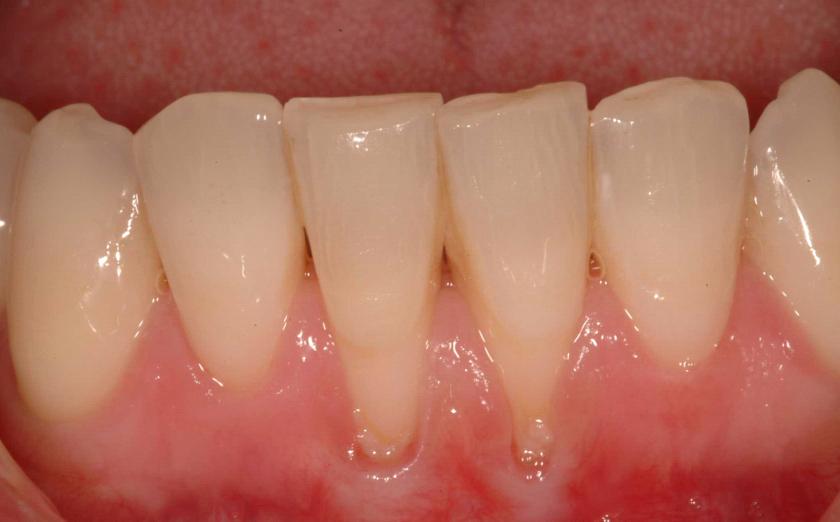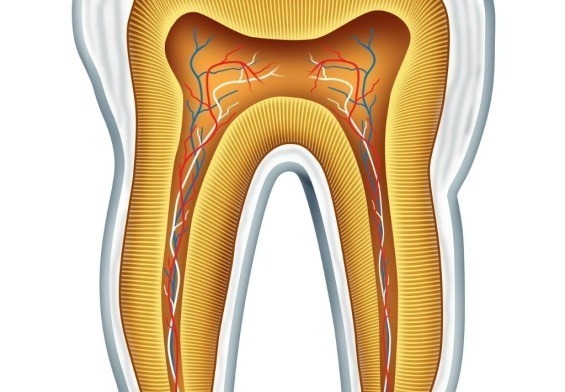Ever look in the mirror and notice that your teeth seem longer or your gums look like they’re pulling back? That’s a common sign of gum recession, and many people experience it without realizing. In fact, gum recession is one of the most common issues patients bring up when they see a dentist in Livingston.
You might think gum recession is only about appearance, but it can lead to serious problems. When your gums recede, they expose the roots of your teeth.
This causes sensitivity, increases the risk of cavities, and can even lead to tooth loss. Gum recession isn’t just a dental issue. It can also affect your general health.
Knowing what causes gingival recession and how to manage it lets you protect your smile. This post details the causes and symptoms of receding gum lines, why early treatment matters, and what options a Livingston dental professional may recommend.
What is Gum Recession?
Gum recession happens when the gum tissue around your teeth wears away or pulls back. The root of your tooth gets exposed, so it’s more vulnerable to sensitivity, decay, and damage.
Gingival recession develops slowly, so you might not notice it right away. Over time, you might see gaps between your teeth and gums. Or feel extra sensitivity when eating or drinking.
Gum recession can cause serious dental problems and compromise your periodontal health if you don’t treat it.
A dentist in Livingston can check for signs of receding gum lines during a routine exam. They’ll measure how far your gums have receded and explain what’s causing it.
Recognizing the problem early makes it easier to treat and prevent further damage.
7 Common Causes of Gum Recession
Gum recession doesn’t happen without a reason. It’s usually the result of habits, health conditions, or the natural shape of your teeth and gums. When you visit a dental clinic in Livingston, they’ll help you figure out what’s causing it.
Some of the most common causes include:
- Periodontal Disease: This bacterial infection damages the gum tissue and bone that support your teeth. As it worsens, the gums pull away from the teeth.
- Aggressive Brushing: Brushing too hard or using a hard-bristled toothbrush can wear down your enamel and gum tissue.
- Poor Oral Hygiene: Plaque and tartar along the gum line increases the risk of inflammation and infection. This often leads to recession
- Smoking and Tobacco Use: Tobacco reduces blood flow to the gums, making it harder for them to stay healthy.
- Teeth Grinding or Clenching: Excess pressure from grinding or clenching can cause gums to weaken and recede.
- Genetics: Some people just have thinner gum tissue, so they’re more prone to recession.
- Orthodontic Treatment or Misaligned Teeth: Shifting teeth or an uneven bite can stress certain areas of the gums.
When you know what’s causing your receding gum lines, you can take the necessary steps to stop it. A dentist in Livingston can help you identify the cause and recommend how to protect your gums.
Warning Signs of Gum Recession
Gum recession often develops slowly, making it easy to miss early on. Many people don’t realize their gums are receding until they notice changes in their teeth or feel discomfort.
That’s why regular visits to a Livingston area dentist are important. They can catch the signs before you do.
Here are some of the most common symptoms:
- Tooth Sensitivity: You may feel a sharp sensation when eating or drinking something cold, hot, sweet, or acidic.
- Teeth That Look Longer: As the gums pull back, more of your tooth becomes visible. Your teeth may appear longer or uneven.
- Visible Notch Near the Gum Line: You might see or feel a groove where your tooth meets the gum.
- Gaps Between Teeth and Gums: As gums recede, pockets form between teeth and gums.
- Swollen or Bleeding Gums: Gingival recession sometimes comes with signs of gum disease, like inflammation or bleeding.
- Loose Teeth: Severe gum recession weakens the bone and tissue supporting your teeth.
If you notice any of these signs, don’t wait. Early diagnosis and treatment can help you avoid more serious dental problems.
Why You Shouldn’t Ignore Gum Recession
It’s easy to overlook gum recession, especially if it doesn’t cause pain at first. But ignoring it can lead to serious consequences.
When your gums recede, they leave the roots of your teeth exposed. This makes your teeth more likely to decay, become infected, or get damaged.
Receding gum lines form pockets where plaque and bacteria collect. Over time, this increases the risk of gum disease, tooth loss, and bone loss in your jaw.
If left untreated, advanced gum disease can even affect how you bite, chew, or speak.
The risks aren’t limited to your mouth. Research shows a strong link between periodontal disease and health problems like heart disease and diabetes.
Some studies link untreated periodontal conditions, like gum recession, to your risk of early death. That’s why a dentist in Livingston will encourage you to address gingival recession early.
Taking action now can prevent long-term damage, avoid complex dental procedures, and protect your overall health.
5 Advanced Treatment Options for Gum Recession
If you’re dealing with gum recession, the good news is there are ways to treat it. The right option depends on how severe the recession is and what’s causing it.
A dental care provider in Livingston can help you choose the best approach.
Here are some common treatments:
- Deep Cleaning (Scaling and Root Planing): This non-surgical procedure removes plaque and tartar from below the gum line. It also smooths the exposed root surfaces to make it harder for bacteria to attach.
- Gum Graft Surgery and Connective Tissue Grafts: Healthy tissue from another area of your mouth is attached to where your gums receded. This helps cover exposed roots and protects your teeth.
- Pinhole Surgical Technique: This minimally invasive procedure involves making a small hole in the gum tissue. Then, special instruments are used to gently loosen and reposition the gum over the exposed root surface.
- Regeneration Procedures: If bone loss has occurred, regenerative treatments like membranes, grafts, or proteins can rebuild bone and tissue.
- Hyaluronic Acid Therapy: Some dentists use hyaluronic acid gel during gum surgery to improve healing and encourage tissue regeneration.
Treating gingival recession early can prevent further damage and restore your gums. Your dentist will work with you to create a treatment plan that fits your situation.
How to Prevent Gum Recession
The best way to avoid receding gum lines is through daily care and regular dental visits. Gentle brushing with a soft-bristled toothbrush, flossing daily, and rinsing with mouthwash all help maintain your periodontal health.
Avoiding tobacco is also important, as it increases your risk of gum disease.
If you grind your teeth or have a misaligned bite, work with your Livingston dentist on a solution. Habits like teeth grinding can put extra pressure on your gums and cause them to recede.
A night guard or orthodontic treatment may help protect your gingival tissue.
Regular dental check-ups are essential. See your dentist at least twice a year. This allows them to track your gum health and catch early signs of recession.
A professional cleaning can remove plaque and tartar buildup you may not be able to remove at home. Good oral hygiene and professional care lower your risk of gum recession and keep your smile healthy.
Gum Recession FAQs
How do I know if I have gum recession and need to see a dentist in Livingston?
Look for signs like increased tooth sensitivity, teeth that appear longer, visible notches near the gum line, gaps between your teeth and gums, swollen or bleeding gums, or loose teeth. If you notice any of these symptoms, see a dentist in Livingston for an evaluation.
What treatments for receding gum lines are available at a Livingston dental clinic?
Treatment options range from deep cleaning (scaling and root planing) to connective tissue grafts, pinhole surgical technique, regeneration procedures, hyaluronic acid therapy, and desensitizing treatments. Your Livingston dental professional will determine the best approach based on your unique case.
How often should I see a dentist in Livingston for gum recession prevention?
Regular dental check-ups, ideally twice a year, help check your periodontal health and catch early signs of recession. A dental care provider in Livingston can perform professional cleanings and provide personalized advice.
What are the costs of gum recession treatment in Livingston, and does insurance cover it?
Costs vary depending on the severity of the recession and the chosen treatment. Insurance coverage also varies. Contact your insurance provider and your dentist in Livingston to discuss your specific situation.
Protect Your Smile from Gum Recession
Gum recession is a common dental problem, but it’s manageable. When you know what causes it and the early signs, you have a better grasp on your oral health.
There are many ways to protect you gums, like better brushing habits, good oral hygiene, and professional treatment.
If you’re concerned about receding gums or haven’t seen a dentist in a while, now is the time to act. A trusted Livingston dental expert evaluates your periodontal health, explains your options, and helps you keep your smile strong.
The sooner you address gingival recession, the easier it is to manage—and the better your long-term dental health will be.
Resources:
Pradeep, K., Rajababu, P., Satyanarayana, D., & Sagar, V. (2012). Gingival Recession: Review and Strategies in Treatment of Recession. Case Reports in Dentistry, 2012(1), 563421. https://doi.org/10.1155/2012/563421
Mehta, V., Kaçani, G., Moaleem, M. M. A., Almohammadi, A. A., Alwafi, M. M., Mulla, A. K., Alharbi, S. O., Aljayyar, A. W., Qeli, E., Toti, Ç., Meto, A., & Fiorillo, L. (2022). Hyaluronic Acid: A New Approach for the Treatment of Gingival Recession-A Systematic Review. International journal of environmental research and public health, 19(21), 14330. https://doi.org/10.3390/ijerph192114330
https://www.webmd.com/oral-health/receding_gums_causes-treatments



